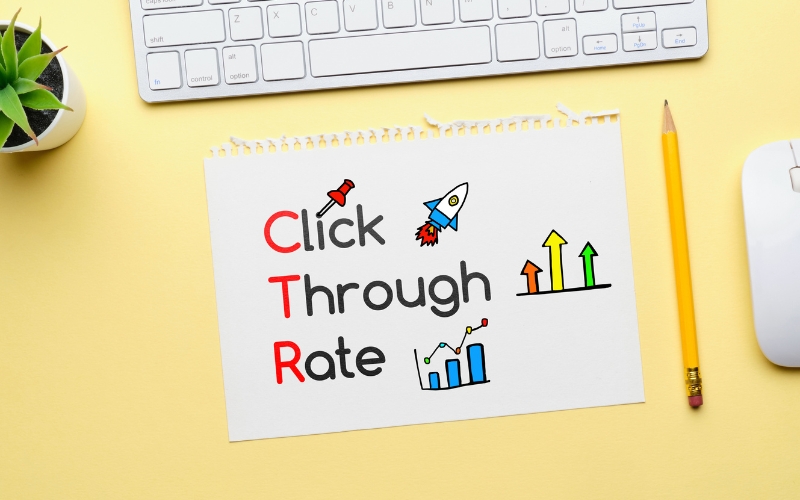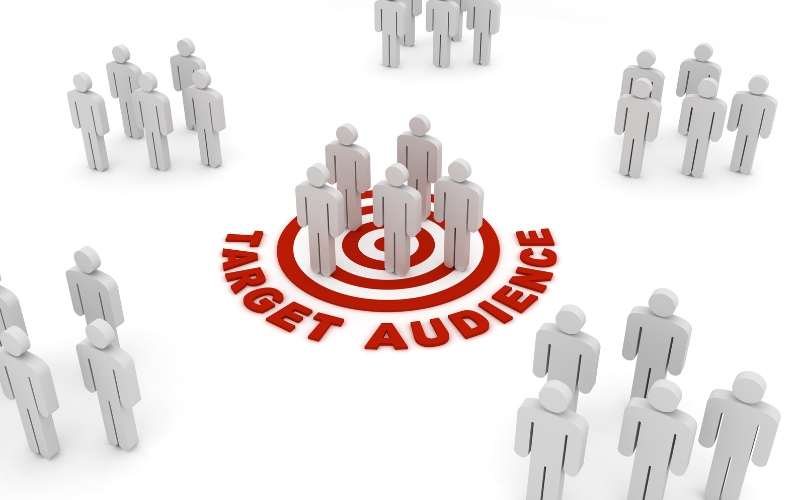
In today’s digital world, social media traffic plays a pivotal role in driving visitors to your website and enhancing online visibility. With billions of users actively engaging on social platforms daily, businesses must leverage the power of social media to connect with potential customers. Understanding the link between social media and website traffic allows brands to create more effective marketing strategies, boost engagement, and ultimately increase conversions. This article delves into how social media traffic contributes to website visits and provides actionable insights to help you harness its full potential.
Understanding the Link Between Social Media and Website Traffic

In today’s digital landscape, social media traffic is a critical driver of website visits, making it an essential component of any effective online marketing strategy. Social media platforms offer businesses unparalleled opportunities to connect with audiences and direct them to their websites. By understanding how social media traffic impacts website visits, companies can harness its power to increase visibility, engagement, and ultimately, conversions.
The relationship between social media engagement and website traffic is undeniable. Every time users engage with content—whether it’s liking, sharing, or commenting—they generate valuable traffic to a brand’s website. The more your audience interacts with your posts, the more likely they are to visit your site for more information, making engagement a key driver of website traffic. Moreover, social media algorithms prioritize content that receives high engagement, increasing the chances of your posts reaching a broader audience. This can significantly amplify social media traffic and direct more users to your website.
Social media also provides businesses with the ability to share a wide range of content, such as blog posts, articles, product pages, or promotional offers, which all act as pathways for social media traffic to flow into the website. By strategically linking to relevant pages in your social media posts, you encourage users to take action and explore your website. Engaging content, whether it’s an eye-catching visual or a compelling caption, can prompt users to click on the provided links and visit your website.
Furthermore, social media is not just a tool for pushing out content; it’s also a platform for building relationships and trust. When users feel connected to your brand on platforms like Instagram, Twitter, or LinkedIn, they are more likely to return to your website for deeper interactions. This ongoing relationship cultivates long-term traffic, where visitors return to your site repeatedly for updates, promotions, and new content.
To truly maximize the potential of social media traffic, businesses need to consistently monitor engagement metrics. By tracking which types of posts generate the most website visits, companies can refine their strategies and focus on the content that delivers the best results. Over time, this continuous improvement leads to higher-quality social media traffic and a more robust online presence, driving even more visitors to the website.
Optimizing Your Social Media Profiles for Maximum Visibility

In today’s digital age, a strong social media presence is crucial for businesses looking to drive more traffic to their website. One of the most effective ways to increase the likelihood of social media traffic is by optimizing your social media profiles. With millions of active users on platforms like Facebook, Instagram, LinkedIn, and Twitter, your profile acts as the first impression potential visitors will have of your brand. A well-optimized profile can boost your visibility, increase discoverability, and ultimately encourage users to visit your website.
The first step in optimizing your social media profile is to ensure that your branding is consistent across all platforms. This includes using the same logo, color scheme, and messaging across all channels, which helps reinforce brand recognition. When users can easily recognize your brand from their social media feeds, they are more likely to click through and explore your website further. Consistent branding not only boosts trust and credibility but also enhances the overall user experience, encouraging more social media traffic to your website.
Next, incorporating relevant keywords into your profile description is essential for discoverability. Social media platforms act as search engines, with users searching for keywords or hashtags that align with their interests. By strategically placing relevant keywords, such as your industry-specific terms or business offerings, you increase the chances of appearing in search results. This means more visibility and more opportunities to generate social media traffic from users who are actively seeking services or products like yours. Ensure that your bio clearly communicates what your business offers while also weaving in these relevant keywords naturally.
Another important aspect of optimization is crafting a compelling bio. The bio should succinctly describe your business, emphasizing what makes it unique. Along with relevant keywords, including a clear call-to-action (CTA) can be beneficial. For example, a CTA such as “Visit our website for more information” or “Click to learn more” can direct users to take action and explore your website. A bio with a well-placed CTA can act as a bridge, turning passive viewers into active visitors, thereby driving more social media traffic.
Lastly, don’t forget to include links to your website in your profile. Whether it’s in the website section or within posts, providing direct access to your site makes it easier for users to transition from social media to your website. A clear, accessible link increases the chances of generating quality social media traffic.
Creating Shareable, Engaging Content to Increase Click-Through Rates

One of the most effective ways to drive social media traffic to your website is by creating shareable and engaging content. Social media platforms are flooded with posts daily, making it crucial to create content that stands out and compels users to click through to your website. When your content resonates with your audience, it not only increases engagement but also boosts your click-through rates (CTR), ultimately driving more visitors to your site.
To begin with, videos are among the most engaging forms of content on social media. Videos grab attention quickly and can convey a large amount of information in a short time. Whether it’s a product demonstration, behind-the-scenes footage, or customer testimonials, video content is highly shareable and encourages users to visit your website for more details. The key to creating successful video content is to keep it concise, visually appealing, and informative. A well-crafted video that is entertaining or educates the audience can generate significant social media traffic and lead users to explore your website.
Infographics are another excellent tool for creating engaging content. These visual representations of data or complex ideas simplify information in a way that’s easy for your audience to digest. Infographics are highly shareable, especially when they contain useful or actionable information. They can also encourage users to click through to your website for additional insights or related resources. By focusing on topics relevant to your audience’s needs, you can craft infographics that resonate deeply, leading to more social media traffic as users look to dive deeper into the content on your website.
Blog posts are an evergreen content type that continues to be valuable for driving social media traffic. A well-written blog post with a catchy headline and engaging content can entice readers to visit your website for further reading. The key to increasing click-through rates with blog posts is to ensure they are optimized for social sharing. Incorporate relevant keywords, compelling visuals, and clear calls-to-action (CTAs) that encourage users to click through to your website for more detailed articles, product pages, or other resources.
Lastly, user-generated content (UGC) plays a significant role in social media engagement. Encouraging users to share their own content related to your brand, such as reviews, testimonials, or photos, can greatly increase social media traffic. When users see others engaging with your brand, they are more likely to click through to your website to learn more.
Leveraging Paid Social Media Campaigns to Target the Right Audience

Paid social media campaigns are an incredibly effective way to drive targeted social media traffic to your website. Platforms like Facebook, Instagram, and LinkedIn offer powerful advertising tools that allow businesses to reach specific audience segments, ensuring that their content reaches the right people. By leveraging paid advertising, you can maximize the potential of social media traffic and direct it towards your website, increasing visibility, engagement, and ultimately conversions.
The first step in leveraging paid campaigns is identifying your target audience. Platforms like Facebook and Instagram provide robust targeting options based on demographics, interests, behaviors, and even location. By using these features, businesses can ensure that their ads are shown to users who are most likely to engage with their content and visit their website. This targeted approach ensures that you are not wasting your advertising budget on audiences who aren’t interested in your products or services, resulting in more relevant social media traffic.
When creating paid social media campaigns, it’s essential to tailor your ads to the preferences and behaviors of your target audience. Craft compelling ad copy and visuals that resonate with their needs and pain points. Ads that evoke emotion, spark curiosity, or offer solutions to problems tend to perform better and generate higher click-through rates (CTR), which is crucial for driving social media traffic. In addition to engaging copy, high-quality visuals—whether they’re images or videos—are key to capturing users’ attention in crowded social feeds.
Another critical component of paid campaigns is the call-to-action (CTA). Including a strong, clear CTA in your ads encourages users to take the next step, whether that’s clicking through to your website to learn more, sign up for a newsletter, or make a purchase. CTAs such as “Shop Now,” “Learn More,” or “Get Started” create a sense of urgency and can significantly increase social media traffic by prompting users to act immediately.
Once your ads are live, continuously monitor their performance to optimize your campaigns. Platforms like Facebook and Instagram provide detailed analytics on ad performance, such as CTR, impressions, and engagement. Use this data to adjust your targeting, refine your messaging, and improve your visuals to ensure that you’re driving the highest quality social media traffic to your website.
Measuring and Analyzing Social Media Traffic to Optimize Results

To maximize the effectiveness of your social media strategy, it’s essential to measure and analyze the social media traffic driving visitors to your website. By using analytics tools, such as Google Analytics and platform-specific insights, businesses can track the impact of their social media efforts, interpret the data, and continuously optimize their strategies to improve traffic flow. This data-driven approach allows businesses to make informed decisions that lead to better engagement and more targeted social media traffic.
One of the most powerful tools for measuring social media traffic is Google Analytics. By linking your social media accounts with Google Analytics, you can track how much traffic is coming from different social media platforms like Facebook, Instagram, Twitter, and LinkedIn. You can see which posts and campaigns are driving the most visitors to your site, which is invaluable information for refining your content strategy. For example, if you notice a particular post or campaign generated a significant spike in social media traffic, you can analyze what worked—whether it was the timing, content type, or a specific call-to-action—and replicate that success in future posts.
Additionally, most social media platforms offer built-in analytics tools that provide valuable insights into audience behavior. Facebook Insights, Instagram Analytics, and Twitter Analytics allow businesses to monitor key metrics such as engagement rates, click-through rates (CTR), and conversions. These platform-specific tools help you gauge how well your content resonates with your audience. Understanding metrics like likes, shares, and comments can also provide valuable feedback on the types of content that drive the most interaction and, ultimately, the most social media traffic to your website.
Interpreting this data is critical for optimizing your social media strategy. For example, if you notice that certain types of posts—such as video content or blog link shares—tend to drive more social media traffic, you can adjust your content mix to focus more on these formats. Similarly, analyzing which platforms yield the highest conversion rates can help you allocate your resources more effectively, investing more time and budget into the platforms that perform best.
Another crucial aspect of measurement is understanding the customer journey. By combining social media traffic data with other metrics, such as bounce rates, time spent on page, and conversions, you can gain insights into how engaged users are once they arrive at your website. If users are visiting but quickly leaving, it may be an indication that your landing pages or content need to be improved to better align with your audience’s expectations.
Conclusion
To further enhance your strategy for boosting social media traffic, it’s valuable to explore industry insights and expert tips. For instance, Social Media Examiner, a leading resource for social media marketing, provides in-depth articles and updates on trends that can help you optimize your social media strategy and drive more website visits. Leveraging these insights can help you refine your content and increase engagement, ultimately improving the flow of social media traffic to your website.
In conclusion, social media traffic is a powerful tool that can significantly impact website visits and overall business success. By understanding the relationship between social media engagement and website traffic, businesses can optimize their strategies to drive more targeted visitors to their site. Whether through organic reach, paid campaigns, or engaging content, leveraging social media traffic is crucial for increasing brand visibility, building relationships with customers, and ultimately achieving business growth. By continuously measuring and optimizing your efforts, you can ensure that your social media strategy delivers maximum value.
For more details or to discuss your specific Social Media Management, visit our Social Media Management services page.

